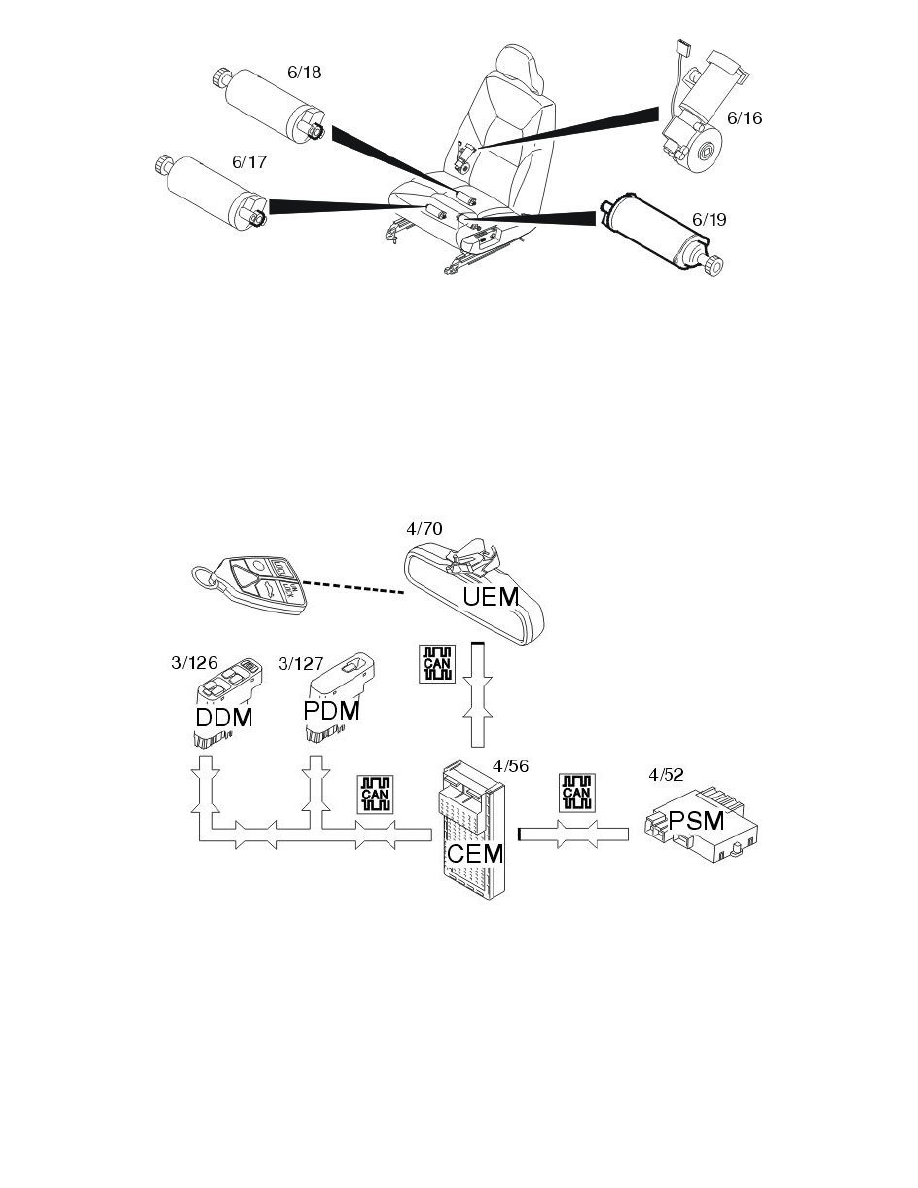S60 L5-2.4L VIN 64 B5244S6 (2003)

On a power seat, the backrest can be adjusted, the seat height can be altered and the seat can be moved forwards or backwards. There are four motors for
moving the seat. The control buttons are on the outside of the seat and are in the shape of a small seat and a small backrest. There are two control buttons
on each panel. The buttons are spring-loaded, so they must be held pressed in for the seat to move.
The seat can be maneuvered:
-
Within a period of 9 minutes and 40 seconds of the door being opened
-
Within 40 seconds of the door being closed
-
With the key in the radio position
-
With the ignition on.
Remote operation of seats
There are three memories in the power seat module (PSM) which store the seat positions for a maximum of 3 remote controls. There are also three
further memory positions which can be stored from the control panel. The seat can store a total of six different memory positions.
Cars with power seats with memory have a personal setting function. Using this function, the positions of the mirrors and seat can be stored individually
for each remote control (a maximum of three remote controls, i.e. remote memory positions 1, 2 and 3).
The customer parameters in the power seat module (4/52) determine whether the remote memory for the seat is activated or not.
From model year 2003 inclusive the remote control memory for the mirrors can also be switched off. This is done using a customer parameter in the
driver's door module (DDM) (3/126) and passenger door module (PDM) (3/127). "Programming of the remote control settings" for seats and mirrors is
carried out via VIDA vehicle communication.
The signal from the remote control is transmitted to the upper control module (UEM) (4/70) when the car is locked or unlocked. The upper electronic
